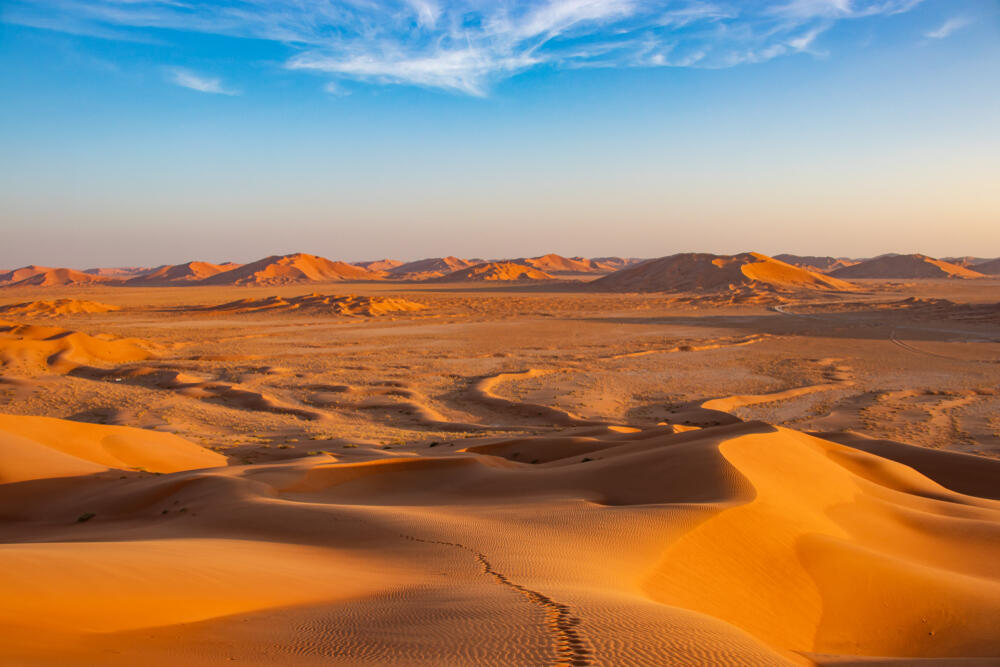The Arabian Peninsula lies entirely within the global desert belt. Despite its arid climate and scarce rainfall, researchers have found evidence of recurring periods in the distant past when the region transformed into a green, fertile landscape. These periods, marked by exceptionally heavy rainfall, led to the formation of lakes and rivers around 9,000 years ago.
An international and interdisciplinary team of researchers documented an ancient, water-rich landscape in the Rub' al-Khali desert. This is not just any desert—it is one of the driest regions on Earth, located in the southern part of the Arabian Peninsula, and is part of the greater Arabian Desert. Known as the Empty Quarter, it is the largest continuous sand desert on the planet.
Dr. Abdullah Zaki and Professor Sébastien Castelltort from the University of Geneva, Professor Abdulkader M Afifi from King Abdullah University of Science and Technology in Saudi Arabia, and Professor Michael Petraglia from Griffith University led the research team. Together, they documented an ancient lake, river systems, and a large valley formed by water. Their findings were published in the journal Communications Earth & Environment.
"Based on a series of dating analyses we conducted, it appears the lake reached its peak around 9,000 years ago during a period when the Arabian Peninsula experienced a particularly rainy and humid climate. This period lasted from 11,000 to 5,000 years ago, turning the barren desert landscape we know today into a green expanse," explained Dr. Zaki.
According to estimates, the ancient lake was vast, covering an area of 425 square miles with a depth of 46 yards. For comparison, the Sea of Galilee (Lake Kinneret) in northern Israel covers just 64 square miles. "Due to the exceptionally high levels of rainfall, the lake overflowed, causing a massive flood that carved a 93-mile-long valley into the desert floor," said Professor Castelltort.
The researchers also conducted paleo-hydrological and geomorphological mapping, which included archaeological sites, ancient river networks, monsoon systems, and the main research location in the Arabian Peninsula. According to their findings, the source of the rainfall was likely the African monsoon. Evidence of its impact can be traced over a distance of 425 miles from the Asir Mountains, a range located primarily in southwestern Saudi Arabia and southern Yemen (part of the longer mountain range along the Afro-Arabian Rift), stretching along the Red Sea near Africa.
2 View gallery


Hydrological mapping on monsoon rain transitions
(Illustration: Communications Earth & Environment (2025). DOI: 10.1038/s43247-025-02224-1. https://www.nature.com/articles/s43247-025-02224-1)
Get the Ynetnews app on your smartphone: Google Play: https://bit.ly/4eJ37pE | Apple App Store: https://bit.ly/3ZL7iNv
Professor Petraglia, director of the Australian Research Centre for Human Evolution at Griffith University, emphasized the intensity of the rainfall during these periods and its transformative impact on the landscape. "The heavy and intense rainfall caused rapid and significant changes to the environment. The creation of a landscape rich in lakes and rivers, along with flourishing vegetation, expanded the areas where hunter-gatherers and pastoralist populations could settle—areas that are now barren and arid deserts," he explained.
"This is supported by the abundance of archaeological evidence found in the Rub' al-Khali desert and along its ancient lake and river systems," he added. Around 6,000 years ago, the region experienced a sharp decline in rainfall, which ultimately led to the dry, arid conditions we see today. These conditions forced the populations that had settled in the area to migrate to more hospitable regions, fundamentally altering the lifestyles of the nomadic communities of that time.


